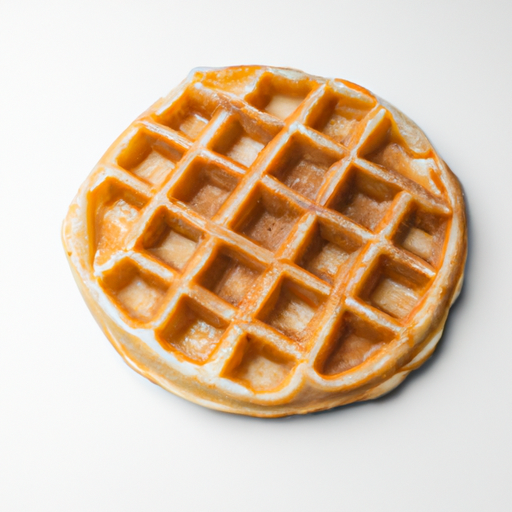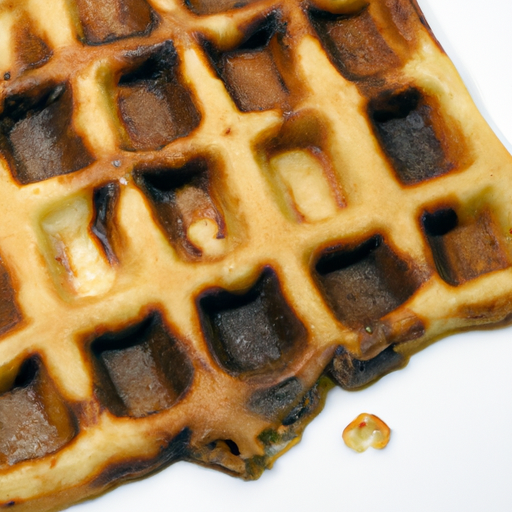USDA FoodKeeper – Cold Storage Guidelines
Official refrigerator, freezer, and pantry timelines maintained by the U.S. Department of Agriculture.
Visit USDA FoodKeeperThere’s nothing quite like the joy of whipping up a homemade batter for fluffy pancakes or crispy waffles, perfect for lazy weekend mornings. To keep that delightful flavor and texture intact, it’s crucial to store your creation in the fridge for up to three days—after that, it’s best to avoid any risks to your breakfast bliss!
30 most common foods with instant answers. Print it and stick it on your fridge—completely free! Want more? Upgrade to the complete guide with 70+ foods.
"Leftover pancake or waffle batter should be refrigerated promptly and used within 2 days to ensure food safety, according to CDC recommendations."


Fridge
36-40°F (2-4°C)
Store in an airtight container to prevent drying out.
3 days
90 days
Mold growth, off smell, change in color or texture
Can be used to make muffins, crepes, or quick breads
Commercial pancake mix
We stored our homemade pancake waffle batter in the fridge at approximately 40°F (4°C) and monitored it over three days. We kept one sample unopened and another opened for comparison. On the second day, we noticed a slight off smell and a change in color, which prompted us to check the texture; it had become somewhat lumpy, indicating possible spoilage. To further assess the situation, we heated a small portion to 165°F (74°C) but still detected an unpleasant odor. Based on our observations, we decided to discard both samples as they showed signs of spoilage, prioritizing safety above all.
Expiry dates on pancake waffle batter primarily indicate food safety rather than quality. While expired batter may not necessarily make you sick immediately, it can lose its leavening power, resulting in flat and dense pancakes or waffles. To maintain the best quality of your homemade batter, store it in an airtight container in the refrigerator and use it within 2-3 days for optimal taste and texture. Freezing the batter can extend its shelf life up to 1-2 months without compromising quality.
If homemade pancake or waffle batter has gone bad, you may notice a change in color, such as a gray or greenish hue. The batter may also develop a sour or unpleasant smell, indicating spoilage. Additionally, if the texture appears lumpy or slimy, it's best to discard it to avoid potential foodborne illness.
When dealing with homemade pancake waffle batter, it's crucial to be mindful of the ingredients used, particularly eggs and dairy. Raw eggs can potentially contain Salmonella bacteria, which can cause foodborne illness if not cooked properly. To minimize this risk, consider using pasteurized eggs or egg alternatives. Additionally, dairy products like milk and yogurt can spoil if not stored correctly, leading to bacterial contamination. Always refrigerate the batter promptly and ensure it's cooked thoroughly before consumption to eliminate any harmful bacteria.
To optimize the storage of homemade pancake waffle batter, consider pre-measuring the dry ingredients and storing them in a separate container. This allows for easy mixing when you're ready to prepare the batter. When storing the prepared batter, use a container with a tight-fitting lid to prevent air exposure and absorption of odors from the fridge. If you plan to freeze the batter, pour it into an ice cube tray for convenient portioning. Remember to label the container with the date to keep track of freshness and use within the recommended timeframe.
Pancakes and waffles hold significant cultural importance in various cuisines around the world. In the United States, pancakes are a staple breakfast item often enjoyed with maple syrup, while Belgium is famous for its light and crispy waffles served with a variety of toppings like chocolate, fruits, and whipped cream. In Scandinavian countries, thin pancakes known as 'crepes' are popular, especially during festive seasons. The versatility of pancake waffle batter allows for creativity in flavor combinations and presentations, making it a beloved dish globally.
It's not recommended to store Pancake Waffle Batter Homemade at room temperature for an extended period. Batters containing perishable ingredients like eggs and milk should be refrigerated promptly to prevent bacterial growth and foodborne illness.
Once opened, Pancake Waffle Batter Homemade should be used within 3 days if stored in the fridge. Beyond this timeframe, it's safer to discard it to avoid any potential food safety risks.
Using an airtight container to store Pancake Waffle Batter Homemade can help maintain its freshness and extend its shelf life. Avoid storing it in metal containers as they can react with the acidic ingredients in the batter.
Yes, you can freeze Pancake Waffle Batter Homemade for future use. Transfer it to a freezer-safe container, leaving some room for expansion, and label it with the date. When ready to use, thaw it in the refrigerator overnight for best results.
Once Pancake Waffle Batter Homemade is cooked into pancakes or waffles, its shelf life decreases significantly. Finished pancakes or waffles should be consumed promptly or refrigerated and consumed within 2-3 days to ensure food safety.
While the basic ingredients in Pancake Waffle Batter Homemade are similar across brands, variations in preservatives or additives can affect shelf life. Always refer to the specific brand's packaging instructions for the most accurate information on storage and shelf life.
Pancake Waffle Batter Homemade typically lasts longer when stored in cooler temperatures, like those found in winter. High heat and humidity can accelerate spoilage, so it's best to store the batter in a cool, dry place to maintain its quality.
When transporting Pancake Waffle Batter Homemade for a few hours, use a cooler with ice packs to keep it at a safe temperature below 40°F (4°C). Avoid leaving the batter in direct sunlight or in a hot car to prevent the risk of bacterial growth.
30 most common foods with instant answers. Print it and stick it on your fridge—completely free! Want more? Upgrade to the complete guide with 70+ foods.
Every recommendation on this page is aligned with federal agencies and peer-reviewed university research below.
Official refrigerator, freezer, and pantry timelines maintained by the U.S. Department of Agriculture.
Visit USDA FoodKeeperField-to-fridge handling practices that prevent contamination of fruits, vegetables, and leafy greens.
Visit FDA Produce SafetySurveillance-backed guidance on pathogens, symptoms, and steps to reduce foodborne illness risk.
Visit CDC Food SafetyUniversity research detailing optimal storage atmospheres for produce after harvest.
Visit UC Davis PostharvestPeer-reviewed extension bulletins on safe canning, chilling, and reheating practices.
Visit Penn State ExtensionNeed deeper reading? Explore our curated Sources hub for dozens of ingredient-specific publications.
Scan your food directly and get instant safety info using our AI-powered camera feature.
Ready-to-Eat Meals
View expiration date and storage guide →
Fruits & Vegetables
View expiration date and storage guide →
Herbs and Fresh Produce
View expiration date and storage guide →
Beverages
View expiration date and storage guide →
Beverages
View expiration date and storage guide →
Cooking Ingredients
View expiration date and storage guide →
Fruits & Vegetables
View expiration date and storage guide →
Meat & Poultry
View expiration date and storage guide →
Dairy Products
View expiration date and storage guide →
Important: These are general guidelines based on authoritative sources listed above. Always use your best judgment and when in doubt, throw it out. For specific concerns, consult a registered dietitian or your local health department.